- General measures for speedy recovery from cold and flu
- Relieving specific cold and flu symptoms
- Herbal remedies for cold and flu
General measures for speedy recovery from cold and flu

You’ll want to get over your cold and flu symptoms and back to your normal work and social schedule as quickly as possible. Being generally healthy is important. When cold and flu strike, it’s also important to get plenty of rest and not over-exert yourself to ensure you recover from your cold or flu as quickly as possible.
Rest is important because it helps your immune system fight cold and flu infection. Getting plenty of rest also helps you cope with feeling unwell and tired. Try to do less when you’re sick with cold or flu, whether that means taking time off work, leaving early, or getting someone else to do the housework and mind the kids. Sleep for 7–8 hours each night.
Your recovery from cold or flu will be faster if you maintain a healthy diet and drink plenty of fluids during your illness. Remember that healthy eating and drinking is not just about eating the right foods, it’s also about avoiding the wrong ones; steer clear of unhealthy substances including alcohol and caffeine.
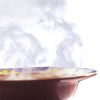 |
For more information on eating and drinking during cold and flu infection, see Cold and Flu: What to Eat and Drink to Get Better Faster. |
When you have a cold, moderate exercise like walking can help alleviate some of the symptoms, but don’t overdo it. Heavy exercise is not recommended as it can make symptoms worse.
Smoking interrupts your body’s natural processes which keep foreign particles out of the respiratory organs including the nose and lungs. Quit smoking or reduce the amount you smoke during periods of cold and flu infection and you’ll reduce the chance of developing another, more serious infection of the respiratory tract.
Get on top of your general health
Find and instantly book affordable GPs within Australia
Relieving specific cold and flu symptoms
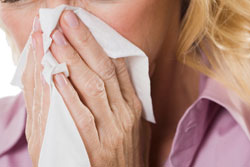
Nose blowing
Blowing your nose is the simplest way to get rid of nasal mucus and clear up a stuffy nose. There is such a thing as ‘proper nose blowing technique’. Doing it properly will limit the spread of cold and flu viruses to your ears and sinuses and reduce the likelihood you will pass your cold or flu onto someone else.
How to blow your nose properly:
- Use disposable tissues: Use them only once before disposal. Tissues should be disposed of immediately after use.
- Do not use cloth handkerchiefs: They harbor cold and flu germs and increase the risk of them spreading to other organs such as your sinuses and/or other people.
- Clear both your nostrils simultaneously: Do not block off one nostril while clearing the other by blowing, as this could force the mucus into your ears or sinuses. Rather, blow gently with both nostrils open.
- Wash your hands immediately: After blowing your nose, using the correct hand washing technique. That means lathering your hands with soap for at least 15 seconds when washing or using an alcohol-based hand disinfectant to ensure cold and flu viruses are removed from your hands.
Suctioning nasal mucus for infants and children who cannot blow their nose
If you’re caring for a baby or young child with a cold or flu, they may not be able to blow their nose yet. You will need to help them clear the mucus from their nose. Use a bulb syringe to gently suction the mucus out of their nose. The syringe should have a blunt tip. It’s best to clear the nose before feedings and sleep.
How to suction nasal passages using a bulb syringe:
- Push the air out of the bulb by squeezing it;
- Insert the syringe into your baby or child’s nose (0.5–1 cm);
- Hold the syringe in place;
- Release the bulb to suction mucus from the nose;
- Remove the syringe from the nose;
- Pump the bulb to release the mucus;
- Repeat the process until you have removed the mucus;
- Wash the syringe with soap and hot water;
- Leave it to air dry when you have finished.
Using a humidifier
Dry air can make cold and flu symptoms like a stuffy nose worse. So using a humidifier to moisten the air in your home can help relieve a stuffy nose. It’s best to place the humidifier or vaporiser in the room where you spend most of your time. Change the water in the humidifier every day to prevent mould building up.
Steam inhalation
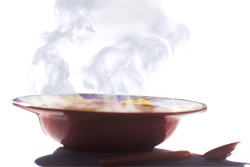
To set up a steam inhalation system at home:
- Fill a large bowl with hot water;
- You might also like to add a drop menthol or eucalyptus to the water;
- Sit with your face over the bowl;
- Place a towel over your head and the bowl to trap the steam;
- Close your eyes to avoid them filling with steam;
- Breathe deeply.
Never use the steam inhalation system for children. It is not safe because they may scald themselves with the hot water.
Alternatively take a hot shower (with the door closed and the fan off) – you will be inhaling steam while in the shower and this will help to relieve congestion. This is a good technique for your children. You could also sit your child in a hot, steamy bathroom while the shower is running. Make sure you supervise them at all times while they are in the bathroom.
Prevent skin chafing
When you have a cold or flu and are blowing your nose often, it doesn’t take long for the skin around your nose to dry out, and it may start chafing. Applying petroleum gel or moisturising lotion to the skin of your nose will help prevent chafing and irritation.
If your cold or flu is causing a sore throat, there are many natural ways to relieve it. Try:
- Gargling salty water several times a day. To prepare a salt water gargle:
- Mix 1–3 teaspoons of salt with one cup of warm water;
- Use a small amount to gargle;
- Spit the salt water out once you have finished gargling.
- Drink hot water with honey and lemon. This simple home remedy relieves sore throats and can be prepared in a couple of minutes by mixing lemon and honey with a cup of hot water.
- Suck on an ice cube or a throat lozenge.
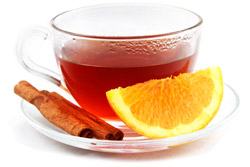
- Have a hot drink before lying down;
- Use a humidifier in your bedroom;
- Elevate your head with an extra pillow or two.
Water is also a great natural cough remedy. Drink eight cups of water per day while you have a cold or flu to keep the body well hydrated and also help your cough – research has proven that staying well hydrated is just as good as using cough medicines.
Keep warm by covering up with a blanket to help relieve chills.
If you have influenza, there’s a good chance you have a fever. Staying cool is important when your body is overheated because of fever. Dress in cool light clothing and keep the house cool. When sleeping, cover up with a light blanket.
Wipe your face, arms and legs with a washer to cool down and make yourself more comfortable. Have a luke warm bath to relieve the heat and discomfort associated with fever. However, if you start shivering, get out of the bath immediately. If your body is shivering, its trying to warm itself up. Your muscles work hard to produce the shivering actions and this actually increases your body temperature.
If you have a fever, it’s also important to drink plenty of fluids to compensate for the water lost from your body when you sweat. Rest is also important because physical activity raises your body temperature and because rest helps you recover quickly.
Herbal remedies for cold and flu

Vitamin C is used by many people to prevent and treat colds and flu, although the health benefits are not yet definitively proven. If you choose to use vitamin C, use it in addition to, rather than instead of, other treatments for cold and flu. Never substitute cold and flu treatments and flu vaccines which have been proven effective for unproven natural therapies.
Vitamin C is generally safe (except in very high doses) and there is some evidence that it can reduce the severity and duration of symptoms. However, it does not prevent colds.
Echinacea is another popular herbal remedy. While some studies suggest that echinacea may be effective in the early treatment of cold and flu, others show that echinacea doesn’t help symptoms or speed up recovery. If you choose to use echinacea, use it to complement rather than replace therapies which have been proven effective. Be aware that some people, including those with auto-immune conditions (e.g. colitis) and allergies to other plants, are allergic to echinacea and develop a skin rash when they use it.
Zinc is a natural substance which has been shown to fight against viruses. Some research suggests that sucking zinc lozenges helps adults fight cold and flu, but more research is needed to prove that is definitely the case. Be aware that zinc nasal sprays are associated with temporary loss of smell and should not be used. If you decide to use zinc lozenges, start taking them within 24 hours of your symptoms appearing.
Avoid herbal remedies manufactured in Asian countries. Like other herbal remedies, their manufacture and sale is not regulated. Some herbal remedies manufactured in Asia may contain tiny amounts of harmful substances, including drugs which can damage the kidneys, be toxic and/or cause cancer.
More information
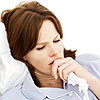 |
For more information on the common cold and influenza, types of influenza and treatments and tips for preventing influenza, see Cold and Flu. |
References
- Sore throat: Lifestyle and home remedies [online]. Scottsdale, AZ: Mayo Clinic; 2010 [cited 14 April 2013]. Available from: [URL link]
- Cold and flu guidelines [online]. Washington, DC: American Lung Association; 2013 [cited 16 June 2013]. Available from: [URL link]
- What are the medicines and treatment for a cold? [online]. Deakin, ACT: National Prescribing Service; 10 May 2013 [cited 16 June 2013]. Available from: [URL link]
- Common cold and the college student [online]. Blacksburg, VA: Schiffert Health Center; March 2010 [cited 16 June 2013]. Available from: [URL link]
- Covington TR, Henkin R, Miller S, et al. Treating the common cold: An expert panel consensus recommendation for primary care clinicians [online]. Lisle, IL: Illinois Academy of Family Physicians; October 2004 [cited 6 June 2011]. Available from: [URL link]
- Influenza – Minimising transmission of influenza in healthcare facilities: 2010 influenza season [online]. North Sydney, NSW: NSW Health; 22 June 2010 [cited 22 April 2013]. Available from: [URL link]
- Hand hygiene guideline [online]. Adelaide, SA: South Australian Infection Control Service; 18 November 2010 [cited 2011, Feb 22]. Available from: [URL link]
- Seasonal flu: Good health habits can stop germs [online]. Atlanta, GA: Centers for Disease Control; 11 January 2013 [cited 14 April 2013]. Available from: [URL link]
- Snellman L, Adams W, Anderson G, et al. Diagnosis and treatment of respiratory illness in children and adults [online]. Bloomington, MN: Institute for Clinical Systems Improvement; January 2013 [cited 17 May 2013]. Available from: [URL link]
- Common cold in babies: Lifestyle and home remedies. Scottsdale, AZ: Mayo Clinic; 2010 [cited 5 May 2013]. Available from: [URL link]
- Curtis GB, Schuler J. Your baby’s first year: Week by week (3rd ed). Cambridge, MA: Da Capo Press; 2010. [Book]
- Treating a common cold [online]. London: National Health Service; 6 October 2011 [cited 21 July 2013]. Available from: [URL link]
- Logan T. Healthy eating tips for cold and flu season [online]. Davidson, NC: Davidson College; November 2008 [cited 16 June 2013]. Available from: [URL link]
- Colds [online]. Providence, RI: Brown University Health Education; 2013 [cited 31 May 2013]. Available from: [URL link]
- Flu treatment [online]. Washington, DC: United States Department of Health and Human Services; 2012 [cited 16 June 2013]. Available from: [URL link]
- Fever: Lifestyle and home remedies [online]. Scottsdale, AZ: Mayo Clinic; 2011 [cited 21 July 2013]. Available from: [URL link]
- Colds and the flu [online]. Baltimore, MD: University of Maryland Medical Centre; 2011 [cited 16 June 2013]. Available from: [URL link]
- The flu, the common cold, and complementary health approaches [online]. Bethesda, MD: National Centre for Alternative and Complementary Medicine; 2011 [cited 13 April 2013]. Available from: [URL link]
All content and media on the HealthEngine Blog is created and published online for informational purposes only. It is not intended to be a substitute for professional medical advice and should not be relied on as health or personal advice. Always seek the guidance of your doctor or other qualified health professional with any questions you may have regarding your health or a medical condition. Never disregard the advice of a medical professional, or delay in seeking it because of something you have read on this Website. If you think you may have a medical emergency, call your doctor, go to the nearest hospital emergency department, or call the emergency services immediately.







